Transistor
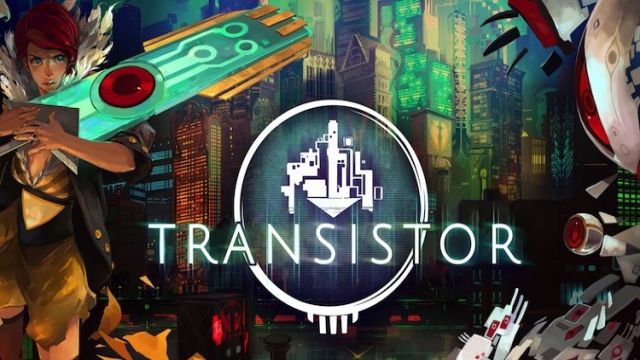
Supergiant made a name for themselves with the incredible Bastion. It’s hard to believe it’s been nearly three years since that was released, because it seems like only yesterday that I was listening to the Tom Waits-esque narrator talk about the on-screen action in a way that was impressive then and more impressive now since no games have copied it. They knew they had their work cut out for them following that up, but the second Transistor was shown at E3 last year with a song that was stuck in everyone’s head after seeing the trailer, you knew they’d follow it up with something different, but equally amazing. Instead of a fantasy setting, Transistor delivers a steampunk one with a touch of noir storytelling.
The iconic song winds up being the final one Red performs before an attempt on her life costs someone else theirs and takes her voice in the process. That “someone” winds up being the un-named man whose voice you hear through the Transistor – aka the giant sword. This thing is so huge that Red needs to drag it around, complete with a spark trail. As you might imagine, it’s a devastating weapon and it gets a variety of powerful upgrades by defeating enemies. You might be thinking it’s part Mega Man in that regard, but this involves the person’s physical form disappearing and they become nothing but a part of a sword – without even a voice to speak with. It’s quite dark and the story is quite ambiguous.
You really need to pay attention to the posters and banners throughout the environment. Sometimes, you’ll be directed to do so, while a few will tip you off to the entire nature of the game’s love-consumed storyline. Both the man inside the Transistor and Red love the city of Cloudbank – but it’s been overthrown to some degree by the Camerata. They’ve siphoned the color and life from the city area by area, and you’ll wind up going through it to eliminate their forces one-by-one and restoring as much color and life to it as possible.
The narration supplied by the Transistor-bound man is far more emotionally-gripping than anything in Bastion, as he clearly cares for Red. At first, this seems like a mere obsession brought on by her being a female and him being lonely. Then you start piecing the puzzle together and recalling the introductory scene and who was killed. After beating the game, going through screenshots allowed me to pinpoint exact posters that made the closeness of the relationship more apparent early on. The idea of a love story with an intimate object was recently explored with “Her”, only here you’ve got a real person’s personality – just inside an object. It’s a different side of the same coin, but equally compelling. With so much of the story relying on the music between the notes, you definitely need your thinking cap on when playing Transistor. If you’ve been searching for a truly mature game that doesn’t equate maturity with swearing and teen-level humor, this is it. The game handles dark themes very well, and tells a compelling love story amid a seemingly greater story of Red vs. “the man” in the Camerata.
You’ll be spending a lot of time hearing bits and pieces of backstory, and spending about as much time in combat. There are two types of combat – real-time ala Bastion and an X-COM/SRPG planning style. Each is ruled by a gauge that refills at a different rate depending on the type of attack. Real-time attacks aren’t guaranteed hits and you aren’t told how much damage you’ll do, how much HP will be left after an attack, or how many attacks will do more damage than needed to kill them (an overkill). However, real-time attacks have the gauge refill as things go on – so if you’ve got a swarm of enemies with 10 HP and a long-range attack equipped, you can knock a few of them out quickly and still have enough to do a bit of damage to a larger enemy.
Depending on your loadout, you can have long-range attacks, short-range ones, and dash around the battlefield. Later on, you’ll even unlock attacks that leave a charge behind that you’ll want to be mindful of. I don’t mind admitting that I took a chunk off my health bar more than once due to getting stuck in a corner due to enemies and not thinking about which attacks I was using. R2 brings out the planned-out combat section. Each face button controls either an attack or a defensive strategy that you assign at a checkpoint. You can change them all or keep them the same – but you’ll eventually change them at some point anyway since you lose the use of one of your attack button types for each traditional in-game life you lose. IE – if your health bar is zero, your X (PS4) button attack is the first to go, followed by sub-attacks, and then other buttons follow suit. That means you’ll want to place your least-useful attack there so you don’t wind up out of luck in a big battle. Your gauge isn’t just limited by the number of attacks, but also the distance needed to do an attack. Going after enemies who are far away takes a big chunk out of your gauge, so you’ll need to decide if it’s worth going for them or just focusing on closer enemies. Generally, you’re better off doing that and then running over to the further foes – your gauge will refill on the way. Before each hit, you’re told how much damage will be done with each particular attack and how much HP the enemy will have left after it. Doing more damage than is needed will result in overkill and since you’ve got a recharging meter for attacks, it’s better to save those for later.
Sure, you could knock out every enemy with that tactic – but you’ll wind up taking far too much damage than you need to. It takes a few seconds before you can have a turn, and in that time, a single enemy can slice a third or more of your life bar if you’re not careful. The combat may seem confusing in text form, but it’s much easier to learn in combat. As someone who hasn’t been in an SRPG mindset since the PS1 era, I was initially a bit fearful of this setup, but I took to it quickly and it wound up leaving me wanting to play some X-COM Enemy Unknown afterwards since the systems seem so similar. I love each aspect of the battle system and Supergiant did an exceptional job with both parts of it – each half works well on its own and in conjunction with the other. Given how easy it is to mess up either kind of battle system, doing both kinds well is amazing. If a flaw can be levied against the combat, it’s that you don’t really have a lot of variety with your enemies – but things never quite feel like they do with a brawler where you face the same enemies over and over. Here, you’ll face the same types of enemies, but they grow and evolve so they require different tactics to defeat five hours into the game than the earliest version did during the first hour. The lack of touch screen integration for the combat also seems like a missed opportunity, but given how precise your positioning needs to be for things to go perfectly, perhaps it’s best that wasn’t used.
On the A/V side of things, Transistor does everything it needs to really well. The sword has a lot of weight to it, Red’s animations have life, and even without hearing her singing voice while playing, the ability to hum at any time showcases the soul that still lives on. It’s a little thing, but it makes you care so much more about her plight – you feel her pain every time you press R1. The presentation is heavily steampunk-influenced and reminds me of both Blade Runner and the early portion of Final Fantasy VII with a ton of metal and also a cityscape being playable. The motorcycle (and boat) interludes remind me a lot of Fujiko Mine on her motorcycle in Lupin the Third anime movies and TV episodes, and I welcome that at any time. The limited-motion comic scenes you get a handful of times are gorgeous and the graphics are some of the most striking on the PS4.
The soundtrack doesn’t seem to have a ton of songs in it, but it’s definitely a case of quality over quantity. As a nice touch, you can even unlock songs for an in-game record player by beating certain tests. I always love seeing sound and music tests brought back – even if they are somewhat hidden behind things. It’s a minor annoyance, but well worth it to have access to the music within the game itself. The Transistor’s voice results in the light bar changing colors, which is one of those small details that doesn’t really matter, but does show how much care went into the final product. You can also choose to have the Transistor’s voice play through the DualShock 4 instead of the TV speakers. I was hesitant about this at first, but did it for my New Game+ playthrough and was amazed at how much more eerie it made things. The idea of that disembodied voice is so much more creepy coming out of an object – even if it’s a controller, and it fits the narrative really well.
Anyone who loved Bastion is going to adore Transistor. The storyline is far more compelling and the combat feels like a natural extension of it. Transistor gives you faster and slower-paced ways to play, and that means it’s going to have a broader appeal. I can see it as a perfect gateway game for those looking to get into more strategic gaming experiences, and the plot is one of the most mature you’re going to find in a game that doesn’t have a lot of bloodshed or excessive swearing. The “games are art” movement gets another citation with this game, while everyone else gets something they’ll be proud to play now and then check out once more just to catch some of the stuff they missed before. Transistor is the best overall PS4 game I’ve played yet, although if you’ve got a PC and not a PS4, by all means get it there as well.
Reviewed By: Jeremy Peeples
Publisher: Supergiant Games
Rating: 100%
——————————————————————————–
This review is based on a digital copy of Transistor for the PlayStation 4 provided by Supergiant Games.
 Game Over Online
Game Over Online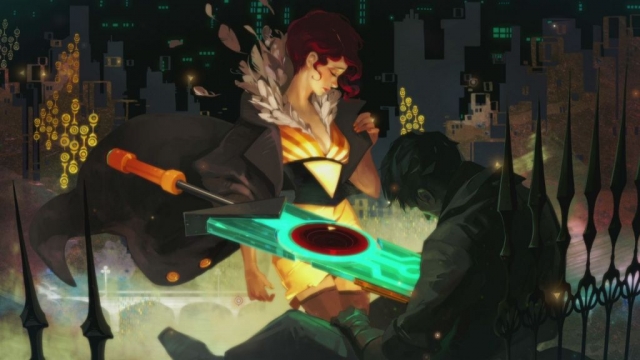
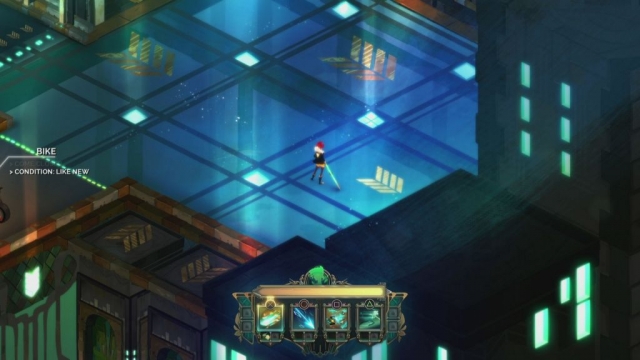
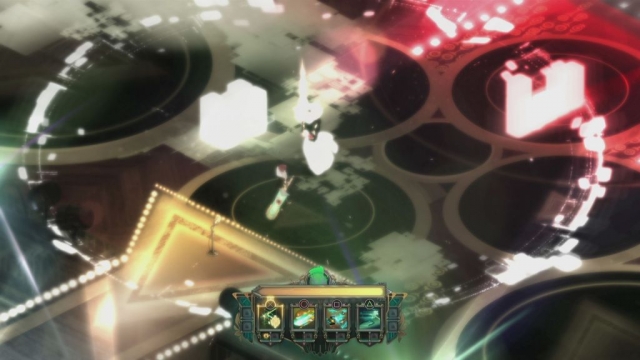
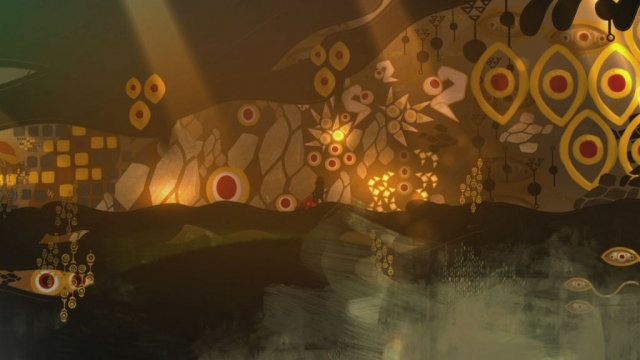












Good review but I really disagree with you when you say it’s heavily steampunk influenced. You’re right about the blade runner feel though. I’d say the influence is more noir/cyberpunk.